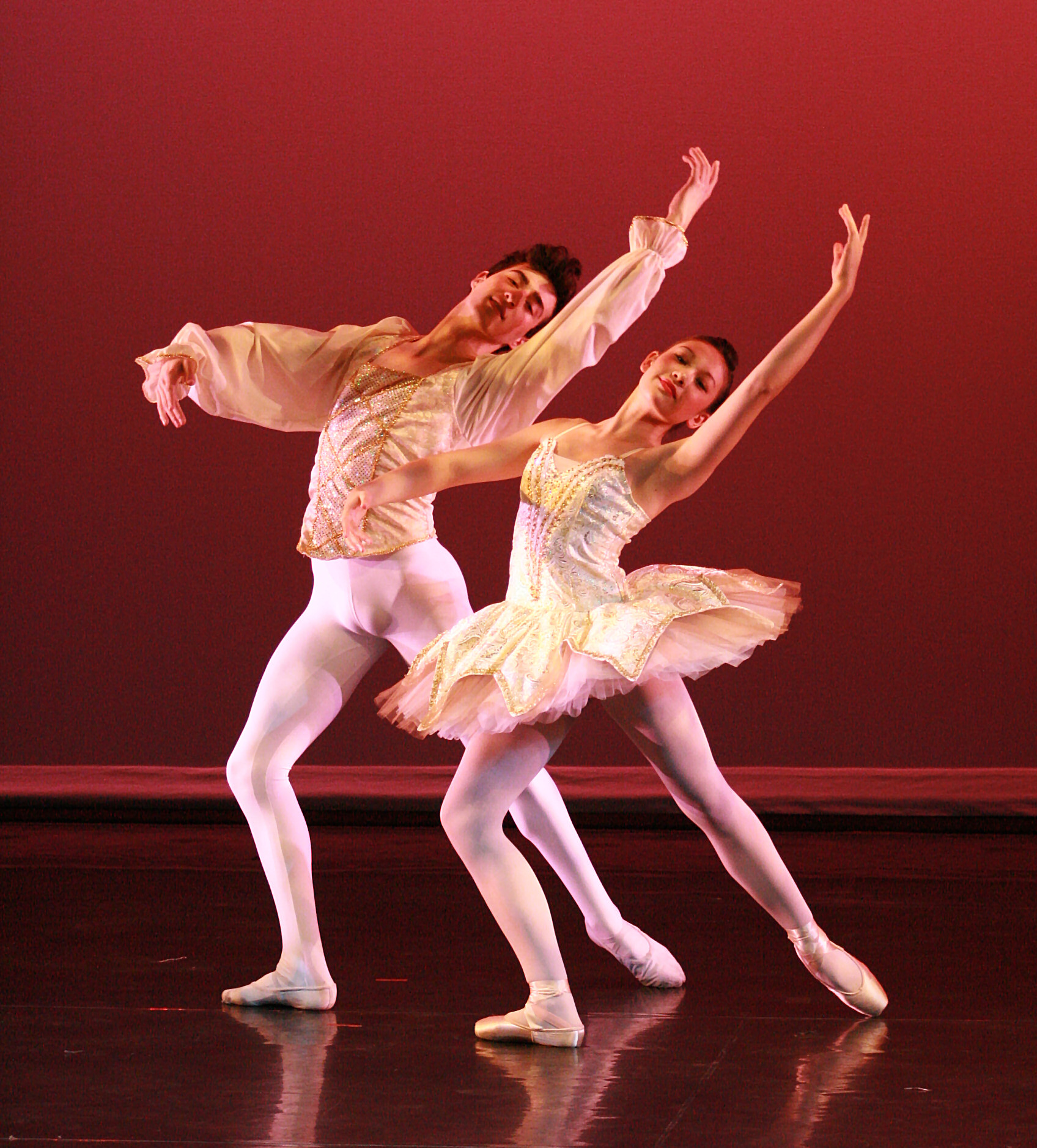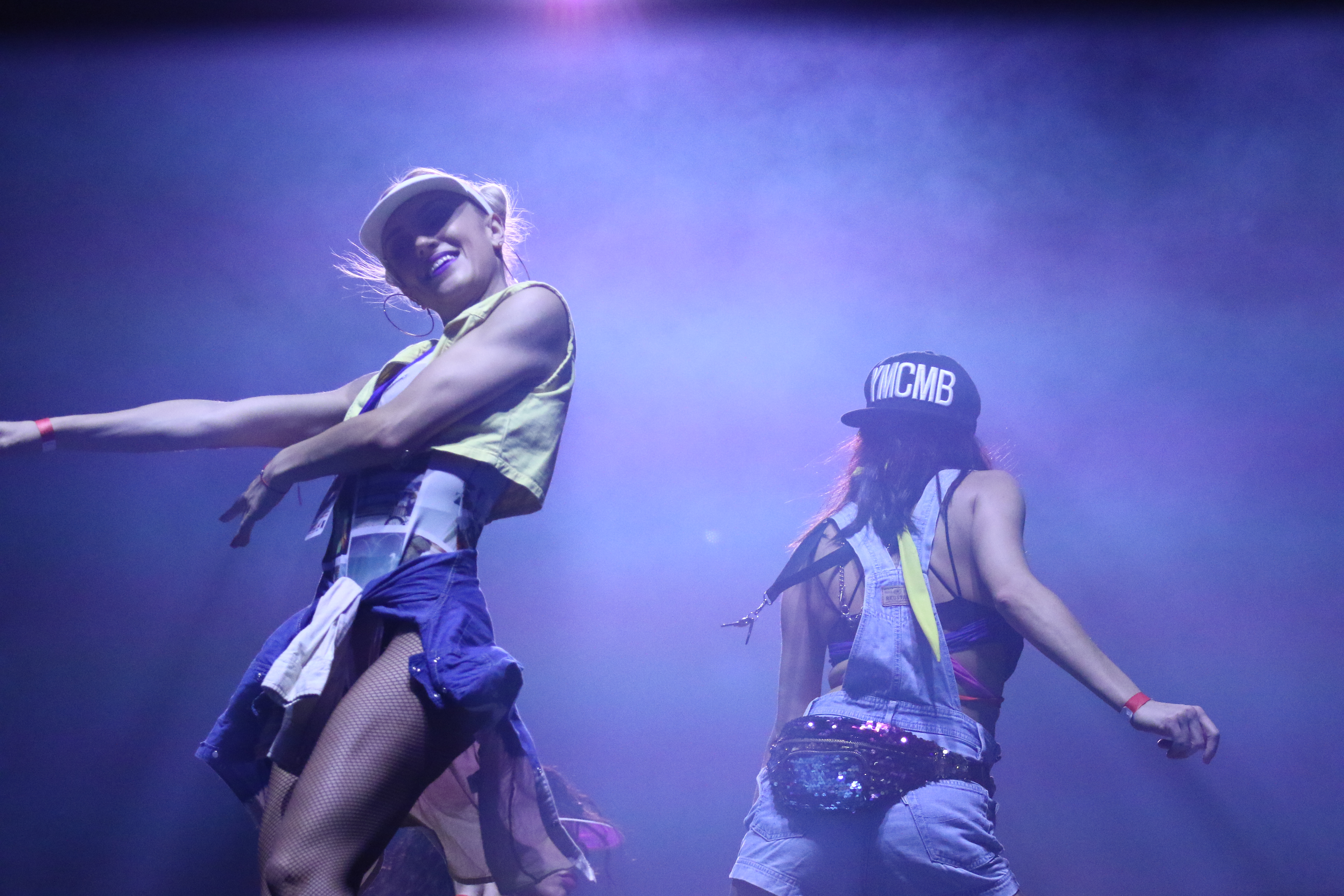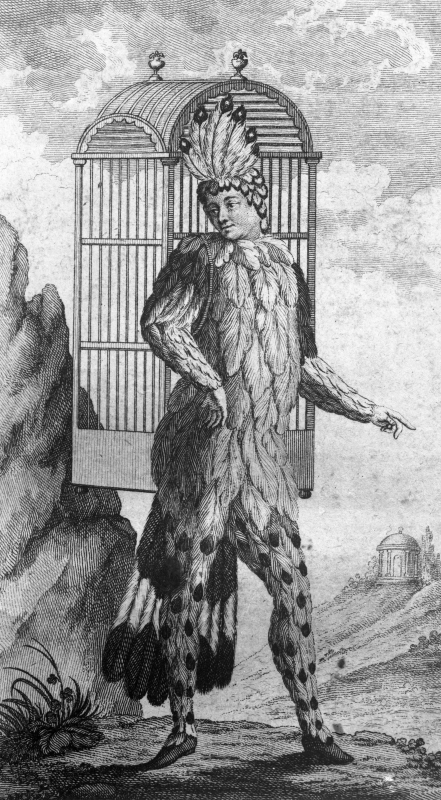|
Bravura
In classical music a bravura is a style of both music and its performance intended to show off the skill of a performer. John Alexander Fuller-Maitland, ''A dictionary of music and musicians (A.D. 1450-1889)'p. 271-272/ref> Commonly, it is a virtuosic passage performed as a solo, and often in a cadenza. The term implies "effect for effect's sake", therefore, while many pieces of Beethoven do require a high skill, they are not described as "bravura". Fuller-Maitland suggests the following arias as examples of bravura: "Let the bright Seraphim" from '' Samson'', " Der Hölle Rache kocht in meinem Herzen" (Act II of ''The Magic Flute'') and "Non più mesta" from '' La Cenerentola''. Musical terms "allegro di bravura" and "con bravura" indicate boldness, fire and brilliance. The term "bravura" also refers to daring performance in ballet, e.g., in reference of the ''pas de deux'' from '' Le Corsaire''. Lynn Garafola describes the Russian ballet school of Marius Petipa Mari ... [...More Info...] [...Related Items...] OR: [Wikipedia] [Google] [Baidu] |
La Cenerentola
("Cinderella, or Goodness Triumphant") is an operatic in two acts by Gioachino Rossini. The libretto was written by Jacopo Ferretti, based on the libretti written by Charles-Guillaume Étienne for the opera '' Cendrillon'' with music by Nicolas Isouard (first performed Paris, 1810) and by Francesco Fiorini for with music by Stefano Pavesi (first performed Milan, 1814). All these operas are versions of the fairy tale '' Cendrillon'' by Charles Perrault. Rossini's opera was first performed in Rome's Teatro Valle on 25 January 1817. In this variation of the fairy tale, the wicked stepmother is replaced by a stepfather, Don Magnifico. The Fairy Godmother is replaced by Alidoro, a philosopher and tutor to the Prince. Cinderella is identified not by a glass slipper but by her silver ring. The supernatural elements that traditionally characterize the Cinderella story were removed from the libretto simply for ease of staging. Rossini composed when he was 25 years old, following t ... [...More Info...] [...Related Items...] OR: [Wikipedia] [Google] [Baidu] |
Pas De Deux
In ballet, a ( French, literally "step of two") is a dance duet in which two dancers, typically a male and a female, perform ballet steps together. The ''pas de deux'' is characteristic of classical ballet and can be found in many well-known ballets, including ''Sleeping Beauty'', ''Swan Lake'', and '' Giselle''. It is most often performed by a male and a female (a ''danseur'' and a ''ballerina'') though there are exceptions, such as in the film '' White Nights'', in which a ''pas de deux'' is performed by Mikhail Baryshnikov and Gregory Hines. ''Grand pas de deux'' A ''grand pas de deux'' is a structured ''pas de deux'' that typically has five parts, consisting of an ''entrée'' (introduction), an ''adagio'', two variations (a solo for each dancer), and a ''coda'' (conclusion). It is effectively a suite of dances that share a common theme, often symbolic of a love story or the partnership inherent in love, with the dancers portraying expressions of affectionate feelings an ... [...More Info...] [...Related Items...] OR: [Wikipedia] [Google] [Baidu] |
Cambridge Companions To Music
The Cambridge Companions to Music form a book series published by Cambridge University Press Cambridge University Press was the university press of the University of Cambridge. Granted a letters patent by King Henry VIII in 1534, it was the oldest university press in the world. Cambridge University Press merged with Cambridge Assessme .... Each book is a collection of essays on the topic commissioned by the publisher. The first was published in 1993, the ''Cambridge Companion to the Violin''. Since then numerous volumes have been published nearly every year, covering a variety of instruments, composers, performers, compositions genres and traditions. Volumes References External links Cambridge music series {{DEFAULTSORT:Cambridge Companions Book series introduced in 1993 Cambridge University Press books Book series Music guides Lists of books ... [...More Info...] [...Related Items...] OR: [Wikipedia] [Google] [Baidu] |
French Ballet
In the French courts during the 17th Century, ballet first begins to flourish with the help of several important men: King Louis XIV, Jean-Baptiste Lully, Pierre Beauchamps, and Molière. The combination of different talents and passions of these four men shaped ballet to what it is today. Early history Louis XIV Louis XIV, the King of France from 1643 to 1715, was a ballet enthusiast from a young age. In fact his birth was celebrated with the ''Ballet de la Felicite'' in 1639. As a young boy, he was strongly supported and encouraged by the court, particularly by Italian-born Cardinal Mazarin, to take part in the ballets. He made his debut at age 12 in the ''Ballet de Cassandre'' in 1651. Two years later in 1653, the teenage king starred as Apollo, the sun god, in '' Ballet Royal de la Nuit'' (Royal Ballet of the Night). His influence on the art form and its influence on him became apparent. His fancy golden costume was not soon forgotten, and his famous performance led to hi ... [...More Info...] [...Related Items...] OR: [Wikipedia] [Google] [Baidu] |
Italian Ballet
Italian ballet is the training methods and aesthetic qualities seen in classical ballet in Italy. Ballet has a long history in Italy, and it is widely believed that the earliest predecessor of modern-day ballet originated in the Italian courts of the Renaissance. Two predominant training systems are used to teach Italian ballet today: the Cecchetti method, devised by Enrico Cecchetti, and that of the La Scala Theatre Ballet School. History (origins of ''il ballo'', or ballet) Ballet began during the Italian Renaissance court as an outgrowth of court pageantry, where aristocratic weddings were lavish celebrations. Court musicians and dancers collaborated to provide elaborate entertainment for them. Ballet was further shaped by the French ''ballet de cour'', which consisted of social dances performed by the nobility in tandem with music, speech, verse, song, pageant, decor and costume. When Catherine de' Medici, an Italian aristocrat with an interest in the arts, married the Fr ... [...More Info...] [...Related Items...] OR: [Wikipedia] [Google] [Baidu] |
Marius Petipa
Marius Ivanovich Petipa (; born Victor Marius Alphonse Petipa; 11 March 1818) was a French and Russian ballet dancer, pedagogue and choreographer. He is considered one of the most influential ballet masters and choreographers in ballet history. Petipa is noted for his long career as ''Premier maître de ballet'' (First Ballet Master) of the St. Petersburg Imperial Theatres, making him Ballet Master and principal choreographer of the Imperial Ballet (today known as the Mariinsky Ballet), a position he held from 1871 until 1903. Petipa created over fifty ballets, some of which have survived in versions either faithful to, inspired by, or reconstructed from his originals. He is most noted for ''The Pharaoh's Daughter'' (1862); ''Don Quixote (ballet), Don Quixote'' (1869); ''La Bayadère'' (1877); ''The Talisman (ballet), Le Talisman'' (1889); ''The Sleeping Beauty Ballet, The Sleeping Beauty'' (1890); ''The Nutcracker'' (choreographed jointly with Lev Ivanov) (1892); ''The Awakeni ... [...More Info...] [...Related Items...] OR: [Wikipedia] [Google] [Baidu] |
Russian Ballet
Russian ballet () () is a form of ballet characteristic of or originating from Russia. Imperial Russian ballet Ballet had already dawned in Russia long before start of the 17th century as per the previous publications by certain authors. In this respect Anna Kuchta posits that ballet was first performed in Russia around 1673. While the first recorded ballet performance is believed to be in the 16th century around 1581, the Tsarist control and isolationism in Russia allowed for little influence from the West. It wasn't until the rise of Peter the Great that Russian society opened up to the West. St. Petersburg was erected to embrace the West and compete against Moscow's isolationism. Peter the Great created a new Russia which rivaled the society of the West with magnificent courts and palaces. His vision was to challenge the west. Classical ballet entered the realm of Russia not as entertainment, but as a "standard of physical comportment to be emulated and internalized – an ide ... [...More Info...] [...Related Items...] OR: [Wikipedia] [Google] [Baidu] |
Lynn Garafola
Lynn Theresa Garafola (born December 12, 1946) is an American dance historian, linguist, critic, curator, lecturer, and educator. A prominent researcher and writer with broad interests in the field of dance history, she is acknowledged as the leading expert on the Ballets Russes de Serge Diaghilev (1909–1929), the most influential company in twentieth-century theatrical dance. Early life and education Born in New York City, Lynn spent her early years in the Upper Manhattan neighborhood of Washington Heights. Her parents were Louis Salvatore Garafola, a printer, and Rose Jean (Marchione) Garafola, whose surname is a Southern Italian corruption of ''garofalo'', meaning "carnation." As a child Lynn studied ballet and violin with teachers from the Armenian diaspora, including Madame Seda Suny, a well-known dance teacher in the neighborhood, and spent leisure time in reading, knitting and stitchery, acting, and swimming. Madame Seda, who was always considered "Russian" by her stude ... [...More Info...] [...Related Items...] OR: [Wikipedia] [Google] [Baidu] |
Le Corsaire
''Le Corsaire'' is a ballet typically presented in three acts, with a libretto originally created by Jules-Henri Vernoy de Saint-Georges loosely based on the poem '' The Corsair'' by Lord Byron. Originally choreographed by Joseph Mazilier to the music of Adolphe Adam and other composers, it was first presented by the ballet of the Théâtre Impérial de l’Opéra in Paris on 23 January 1856. All modern productions of ''Le Corsaire'' are derived from the revivals staged by the Ballet Master Marius Petipa for the Imperial Ballet of St. Petersburg throughout the mid to late 19th century. The ballet has many celebrated passages which are often excerpted from the full-length work and performed independently: the scene ''Le Jardin animé'', the ''Pas d’esclave'', the ''Pas de trois des odalisques'', and the so-called ''Le Corsaire pas de deux'' (music mostly by Riccardo Drigo), which is among classical ballet's most famous and performed excerpts. Synopsis Act 1 Scene 1 ... [...More Info...] [...Related Items...] OR: [Wikipedia] [Google] [Baidu] |
European Classical Music
Classical music generally refers to the art music of the Western world, considered to be #Relationship to other music traditions, distinct from Western folk music or popular music traditions. It is sometimes distinguished as Western classical music, as the term "classical music" can also be applied to List of classical and art music traditions, non-Western art musics. Classical music is often characterized by formality and complexity in its musical form and Harmony, harmonic organization, particularly with the use of polyphony. Since at least the ninth century, it has been primarily a written tradition, spawning a sophisticated music notation, notational system, as well as accompanying literature in music analysis, analytical, music criticism, critical, Music history, historiographical, musicology, musicological and Philosophy of music, philosophical practices. A foundational component of Western culture, classical music is frequently seen from the perspective of individual or com ... [...More Info...] [...Related Items...] OR: [Wikipedia] [Google] [Baidu] |
Performer
The performing arts are The arts, arts such as music, dance, and drama which are performed for an audience. They are different from the visual arts, which involve the use of paint, canvas or various materials to create physical or static art objects. Performing arts include a range of disciplines which are performed in front of a live audience, including theatre, music, and dance. Theatre, music, gymnastics, object manipulation, and other kinds of performances are present in all human cultures. The history of music and history of dance, dance date to pre-historic times whereas circus skills date to at least Ancient Egypt. Many performing arts are performed professionally. Performance can be in purpose-built buildings, such as theatres and opera houses; on open air stages at festivals; on stages in tents, as in circuses; or on the street. Live performances before an audience are a form of entertainment. The development of Sound recording and reproduction, audio and video recordi ... [...More Info...] [...Related Items...] OR: [Wikipedia] [Google] [Baidu] |
The Magic Flute
''The Magic Flute'' (, ), K. 620, is an opera in two acts by Wolfgang Amadeus Mozart to a German libretto by Emanuel Schikaneder. It is a ''Singspiel'', a popular form that included both singing and spoken dialogue. The work premiered on 30 September 1791 at Schikaneder's theatre, the Freihaus-Theater auf der Wieden in Vienna, just two months before Mozart's death. It was Mozart's last opera. It was an outstanding success from its first performances, and remains a staple of the opera repertory. In the opera the Queen of the Night persuades Prince Tamino to rescue her daughter Pamina from captivity under the high priest Sarastro; instead, he learns the high ideals of Sarastro's community and seeks to join it. Separately, then together, Tamino and Pamina undergo severe trials of initiation, which end in triumph, with the Queen and her cohorts vanquished. The earthy Papageno, who accompanies Tamino on his quest, fails the trials completely but is rewarded anyway with the ... [...More Info...] [...Related Items...] OR: [Wikipedia] [Google] [Baidu] |








